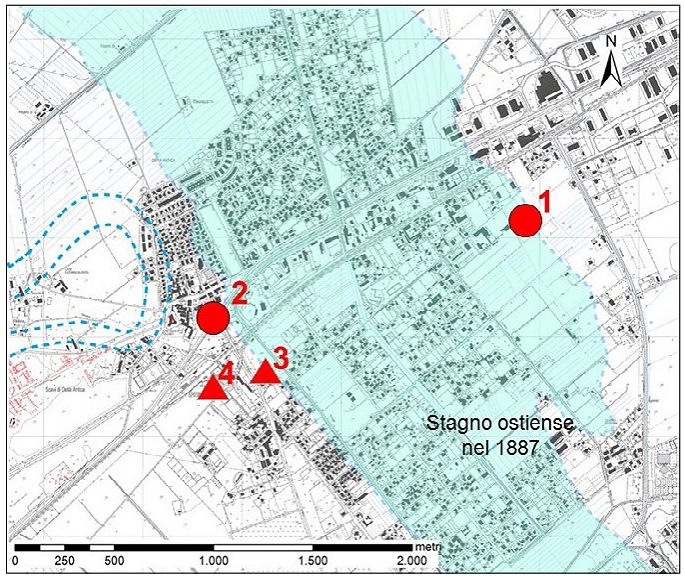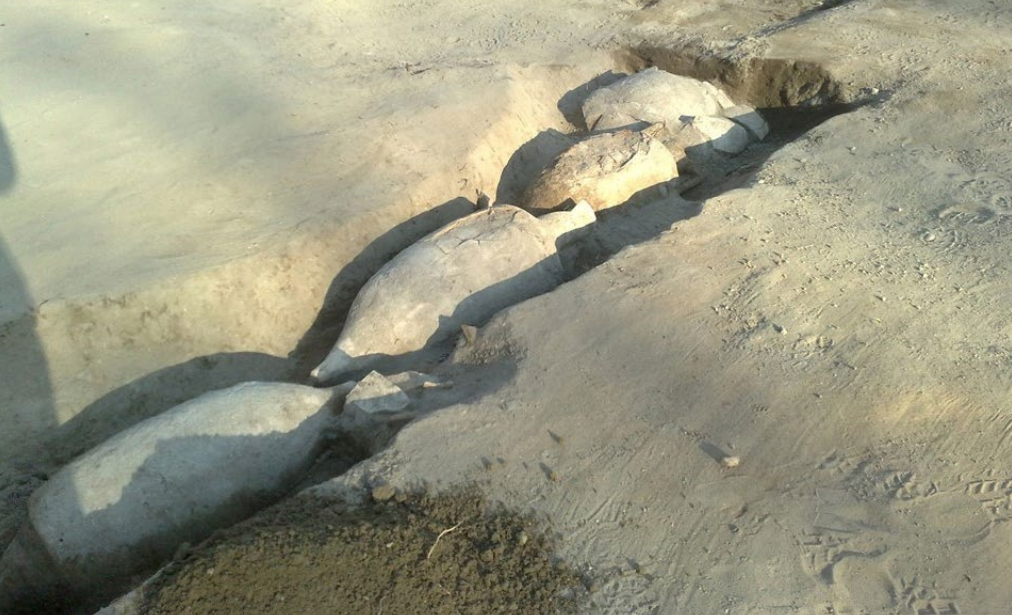The swamp
In the swamp or lagoon to the east of the Pianabella rubble was dumped of buildings that had been destroyed by the great fire of Rome under Nero, in 64 AD, as recounted by Tacitus:
| Ruderi accipiendo Ostiensis paludes destinabat utique naves quae frumentum Tiberi subvectassent onustae rudere decurrerent. | Nero fixed on the marshes of Ostia for the reception of the rubbish, and arranged that the ships which had brought up corn by the Tiber, should sail down the river with cargoes of this rubbish. |
| Tacitus, Annales XV,43. Translation A.J. Church and W.J. Brodribb. | |
The swamp was drained in the late 19th and early 20th century by colonists from Ravenna, in the Emilia-Romagna region of Northern Italy. Their work is known as the "bonifica" (reclamation, drainage). Their origin explains why the main road of modern Ostia Antica is called Viale dei Romagnoli, and the large park to the east of the mediaeval borgo Parco dei Ravennati.
The western and eastern boundaries of the swamp coincide more or less with the Via Luigi Pernier and Via del Fosso di Dragoncello. On the west side, at the localities Longarina and Vivaio Rosellini, drainage systems were found consisting of rows of amphoras. They were installed during the reign of Augustus. On the east side of the swamp a rectangular oven was found, possibly for the production of bricks. Some prehistoric remains were found as well, perhaps related to salt pans or fishing in the lagoon.

Map of the area of the swamp. Image: Pannuzi 2019, fig. 1.
1: prehistoric remains in Via del Fosso di Dragoncello. 2: prehistoric remains.
3-4: drainage systems of amphoras at localities Longarina and Vivaio Rosellini.

Part of the drainage system of amphoras at locality Vivaio Rosellini. Image: Pannuzi 2019, fig. 2.